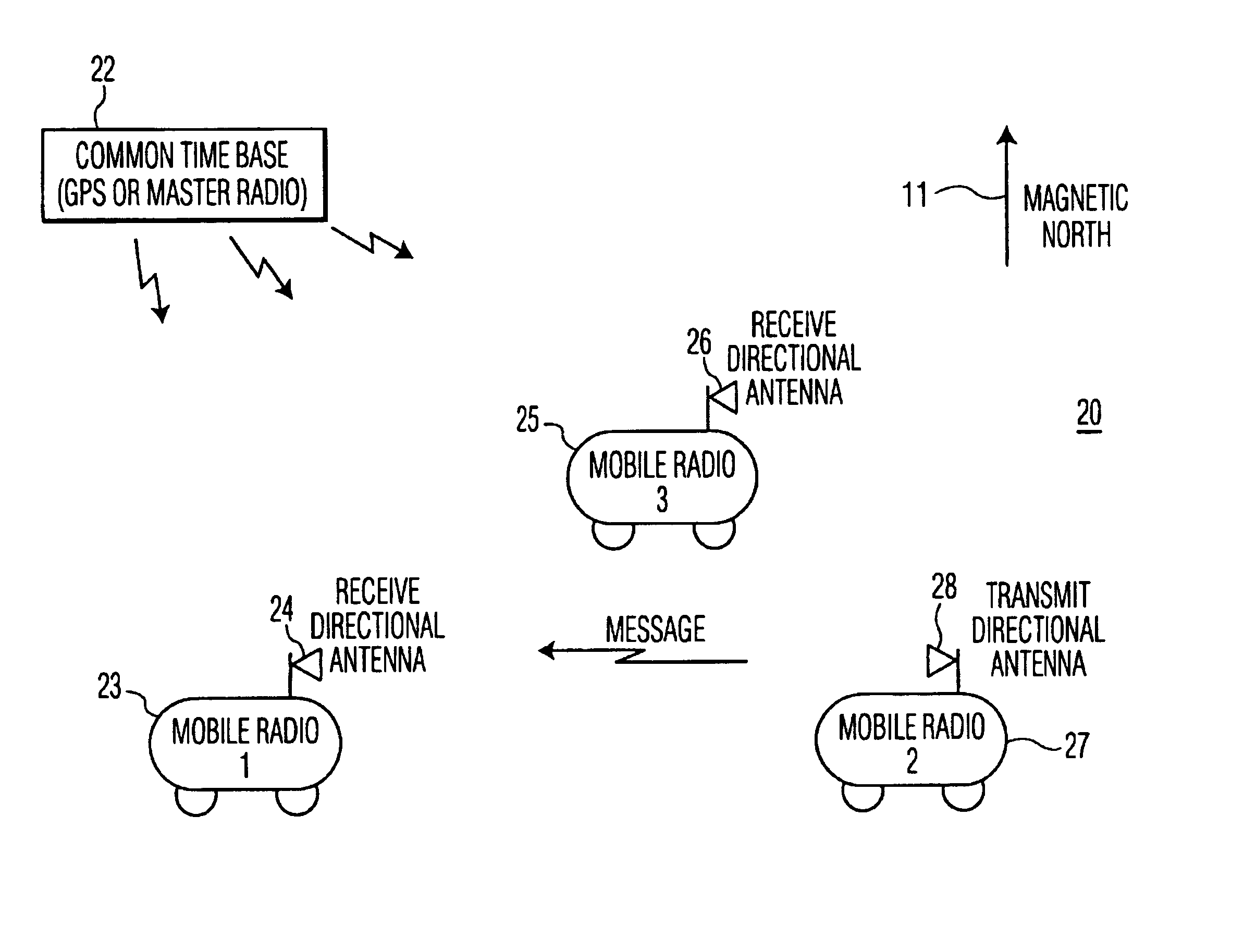Method of steering smart antennas
a technology of antennas and antennas, applied in diversity/multi-antenna systems, sites, instruments, etc., can solve the problems of radio interference in other nodes, poor lpi (low probability of intercept) properties, and inability to have directional power gain
- Summary
- Abstract
- Description
- Claims
- Application Information
AI Technical Summary
Benefits of technology
Problems solved by technology
Method used
Image
Examples
Embodiment Construction
[0017]Referring now to the figures in greater detail, FIGS. 1a and 1b are block diagrams of communication network 10 in accordance with an embodiment of the present invention. As shown, communication network 10 includes multiple receivers / transmitters (also referred to herein as nodes), designated RT1, RT2, RT3 and RT4. Each node includes steerable receive and transmit antennas. In FIG. 1a, there is shown receive directional antennas 14, 16 and 18, which are steered, respectively, by RT1, RT2, and RT3. Although not shown, RT1, RT2, and RT3 each includes a transmit directional antenna, which may be time-shared or multiplexed with the receive antenna, or may be a physically separate antenna.
[0018]As will be explained, each node synchronizes the scan of its receive antenna with the scan of receive antennas of other nodes in the communication network. Each node in the network includes a similar predetermined scanning algorithm for steering its own antenna as a function of a common time ...
PUM
 Login to View More
Login to View More Abstract
Description
Claims
Application Information
 Login to View More
Login to View More - R&D
- Intellectual Property
- Life Sciences
- Materials
- Tech Scout
- Unparalleled Data Quality
- Higher Quality Content
- 60% Fewer Hallucinations
Browse by: Latest US Patents, China's latest patents, Technical Efficacy Thesaurus, Application Domain, Technology Topic, Popular Technical Reports.
© 2025 PatSnap. All rights reserved.Legal|Privacy policy|Modern Slavery Act Transparency Statement|Sitemap|About US| Contact US: help@patsnap.com



